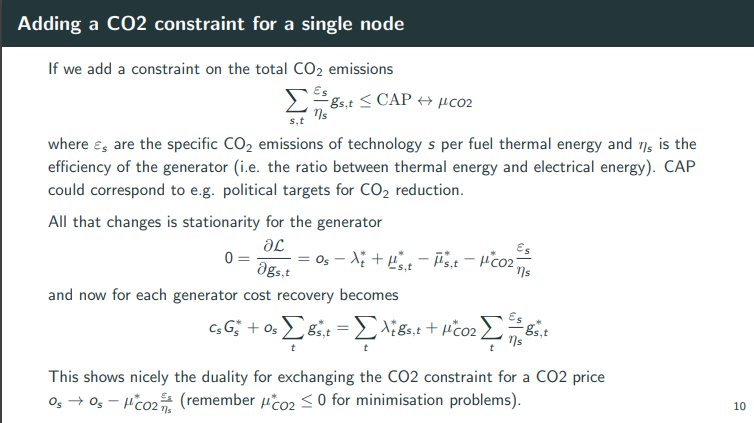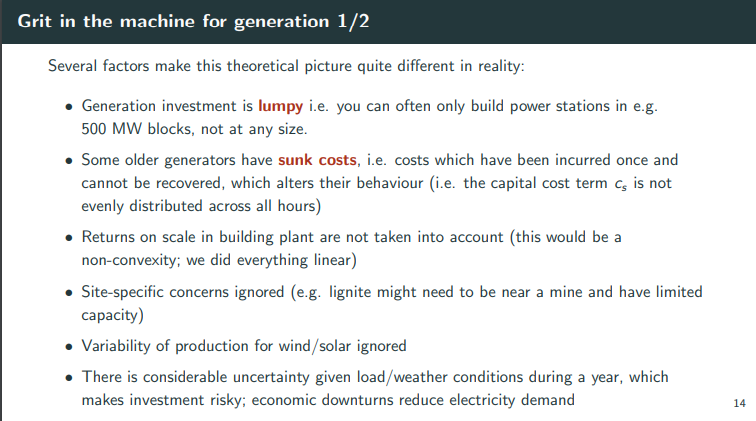
Thought a grad course in Energy Systems Modelling would cost thousands? Thanks to COVID you can do a full graduate course for free online.
Worried about how a renewable-powered world keeps the lights on when “the sun doesn’t shine and the wind doesn’t blow”? Interested in energy systems modelling?
Whether you’re an engineer looking for professional development, or you’re just interested in how things work, Tom Brown of the Karlsruhe Institute of Technology in Germany has posted his entire graduate course in energy systems modelling online.
Brown leads the institute’s Energy Systems Modelling team (bio here).
Making the announcement on Twitter, Brown tells students what to expect, and it’s quite the package: 800 slides, and 18 hours of video – and it’s posted under the Creative Commons Attribution 4.0 International License.
It's aimed at computer scientists and engineers, so runs more on the technical side than on the policy side (sorry), and reflects my own biases and misunderstandings.
Sorry if it doesn't include your favourite topic – feel free to remix your own lectures :-).
— Tom Brown (@nworbmot) June 25, 2020
Naturally enough, its case studies draw on Germany, so time-series data, current renewables deployment, cost recovery models and so on are German- or Euro-centric.
While the theory should be equally applicable here as much as in Germany, the interaction between regulation and pricing is an important point of difference – for example, how different regulators handle wholesale price caps.
Even so, his data shows that Europe and Australia have broadly similar experiences. Who wouldn’t recognise this:
“Prices are zero around a quarter of the time, but spike above €10,000/MWh in some hours”?
Because all of the EU member states have their own national-scale transmission infrastructure operators, flows across European interconnects are far more difficult to model than they would be in Australia’s NEM. In his modelling, Brown uses clustering, because modelling all 5,000 nodes in Europe’s transmission network would be unwieldy.
Scanning the sixteen lecture videos, this is a very detailed course, covering power flow theory, storage modelling, electricity markets, optimisation of networks and storage, the trade-off between investing in dispatchable generation and transmission, cost recovery, and much more.
We’re talking serious stuff, here – I have absolutely no idea how the maths in a slide like this works:

Tom Brown’s modelling is serious stuff — republished under Creative Commons
Whereas this description of why we don’t have a “perfect market” in electricity is plain even to me:

Imperfections in energy markets, by Tom Brown – republished under Creative Commons
So if you’ve got a technical/mathematical background and would like to deeply understand the challenges and mechanics of integrating solar and other renewables into the grid, why not forgo 18 hours of Netflix and learn from Tom Brown instead?

 RSS - Posts
RSS - Posts



Hmm, I’ve forgotten how to read the notation for summation, and can’t at first glance discern the limits of the summation, or quite see how t fits in.
What I can model, though, is that the quicker I put the apparently million screws into my kit kitchen, finish the bathrooom, …., and put panels on the roof, the quicker I can relegate the petrol generator to backup duty. That’ll get a load of black balloons off my conscience. (And save some money.)
That’s a pretty localised model, I’ll admit, but off-grid is like that.
There are reports that the Americans are currently using one of their semi-secret mini spaceplanes to test microwave energy transfer from space, ostensibly to confirm feasibility of orbiting solar arrays for power generation.
Modelling on my fingers tells me that we already have had that energy transfer covered for a billion years or so – with better free distribution characteristics and safety than microwave beams can ever offer. Except maybe for powering unmanned ships in mid-ocean, with batteries only needed in coastal waters. I wonder what their use-case might be?
Do you have a URL for the course?
Hi Larry, the link is here:
https://nworbmot.org/courses/esm-2020/
The link can be clicked on in the twitter post shown in the article, but clicking on what appears to be an image probably isn’t something I’d try straight off myself.
THANKS!